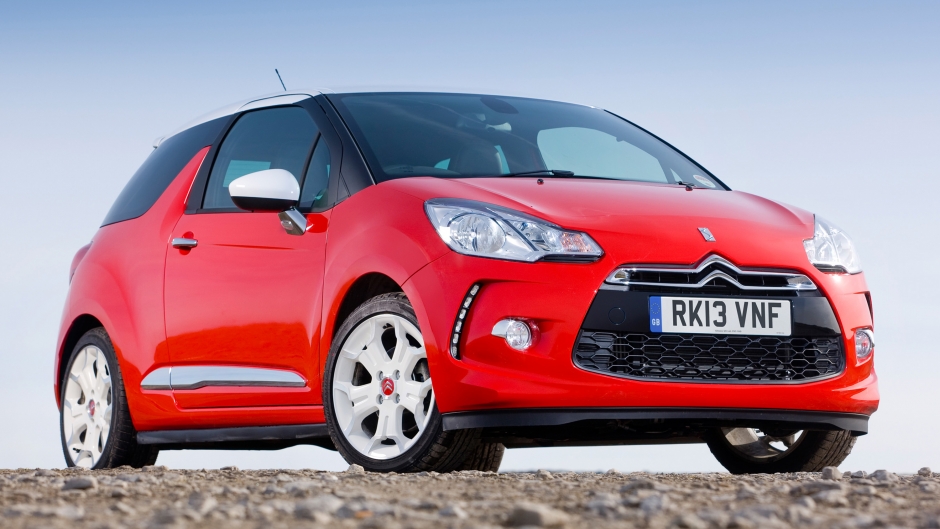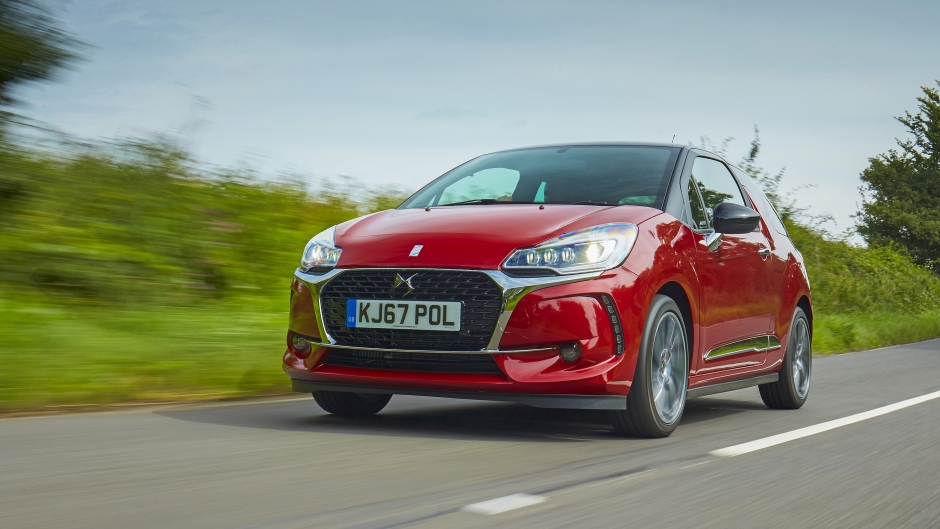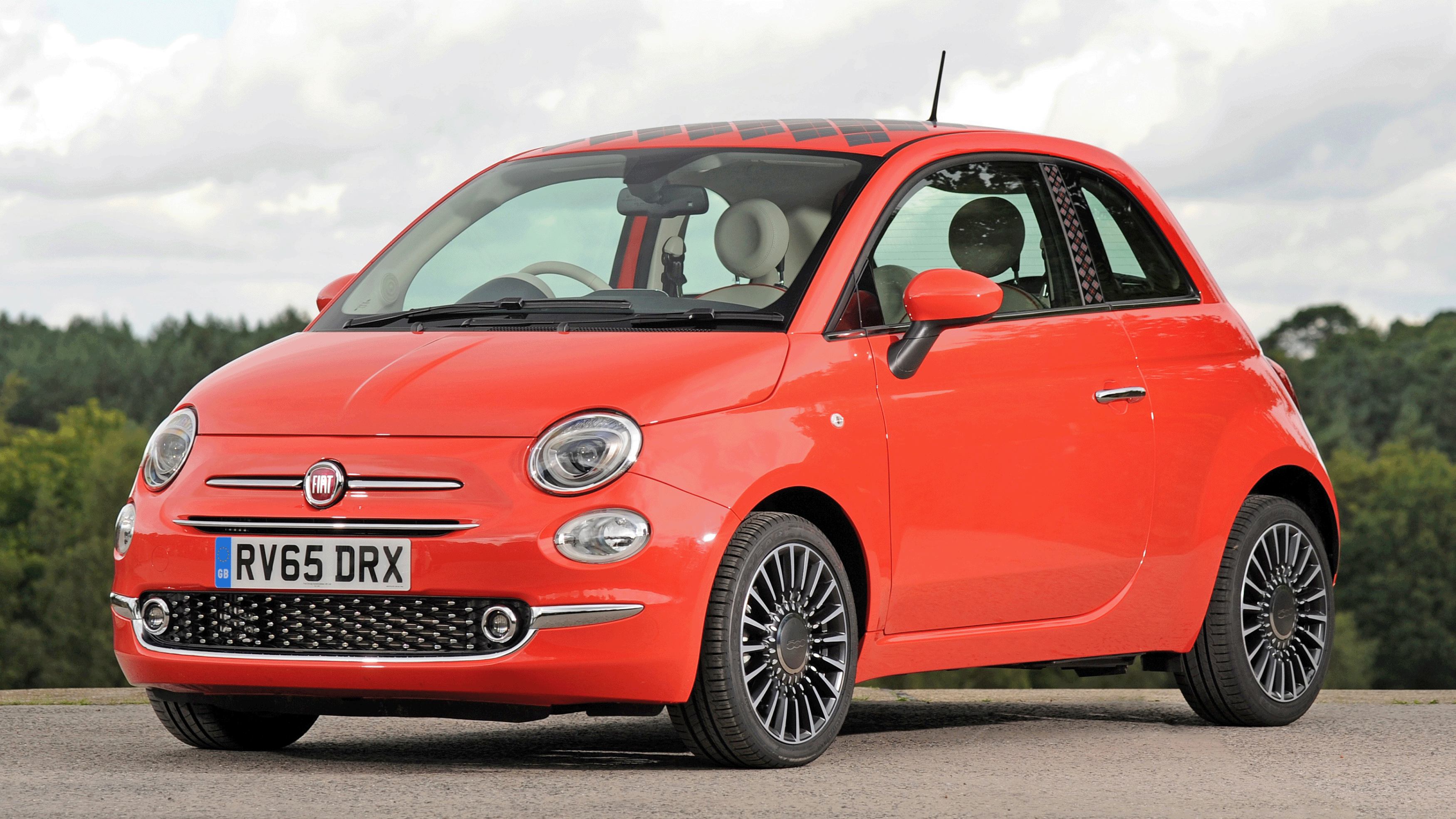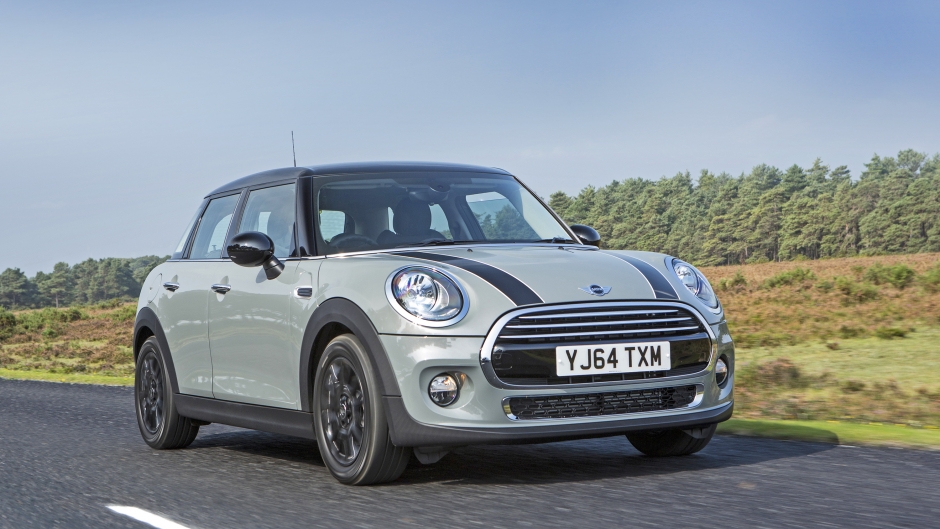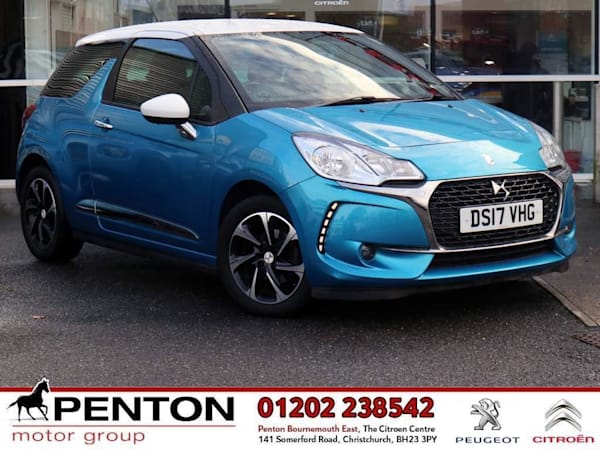DS3 (2016-2019) Review
Everything you need to know about the affordable and stylish Citroen DS3 (2010-2016) and DS 3 (2016-2019) superminis
Strengths & weaknesses
- Stylish looks
- Good value
- Comfortable to drive
- Not as much fun as a Mini
- Technology feels dated
- Not a hugely practical supermini
The Citroen DS3 is a small car that was designed to compete for sales with the Fiat 500 and Mini Hatchback. It is a three-door hatchback with stylish looks and various petrol and diesel engine options and was renamed after Citroen launched 'DS' as an upmarket sub-brand, to become the DS 3.
The name is a bit confusing. The original Citroen DS of the 1950s inspired the name of a new model that arrived in 2010, the Citroen DS3. The car continued with this name until 2016, when the French brand decided that it would launch a new brand of car called DS. When that happened, the Citroen DS3 became the DS 3 until it went off sale in 2019.
To put it even more simply, the 2010-2016 car is the Citroen (make) DS3 (model) and the 2016-2019 car is the DS (make) 3 (model). You can read more about the differences between them below, but there aren’t too many and the car was fundamentally very similar for the nine years it was on sale.
It’s not the most practical option if you want a small car, as it is a three-door only, but the successful Fiat 500 is this way as well. There’s a five-door Mini but it’s a bigger car and more expensive. If you need something with a good amount of space inside, try a Skoda Fabia or Volkswagen Polo.
There were also Cabrio (convertible) and Racing (high-performance hot hatchback) versions of the Citroen DS3/DS 3, though they aren’t as impressive as the normal versions. We recommend one of the cheap-to-run petrol models, as if you do a lot of miles and are thinking about diesel power, there are better cars for motorway trips.
Read on to find out more about the Citroen DS3 and DS 3 and see if it’s right for you as a used car.
Should I get a DS 3?
✔ Stylish looks
✔ Good value
✔ Comfortable to drive
✘ Not as much fun as a Mini
✘ Technology feels dated
✘ Not a hugely practical supermini
The Citroen DS3 or DS 3 is a great choice if you want a stylish and fun small car but don’t want a Fiat 500 or Mini. It’s good to drive, comfortable and good value for money, plus it has a good range of engines and even the option of an open-top Cabrio model.
It’s not a very practical choice but if you don’t carry passengers in the back very often then it will be fine for most people, and the small size means it’s fairly cheap to run as well. It should be reasonably reliable, though as with any used car you should only buy one with a good service history that has been looked after well to minimise the chance of potential issues.
- Models explained
- Trim levels
- Engine
- Best DS 3 for...
- Rivals
- Dimensions
- Boot space
- Reliability
- Warranty
- Should I buy used?
- Deals
Citroen DS3 and DS 3: models explained
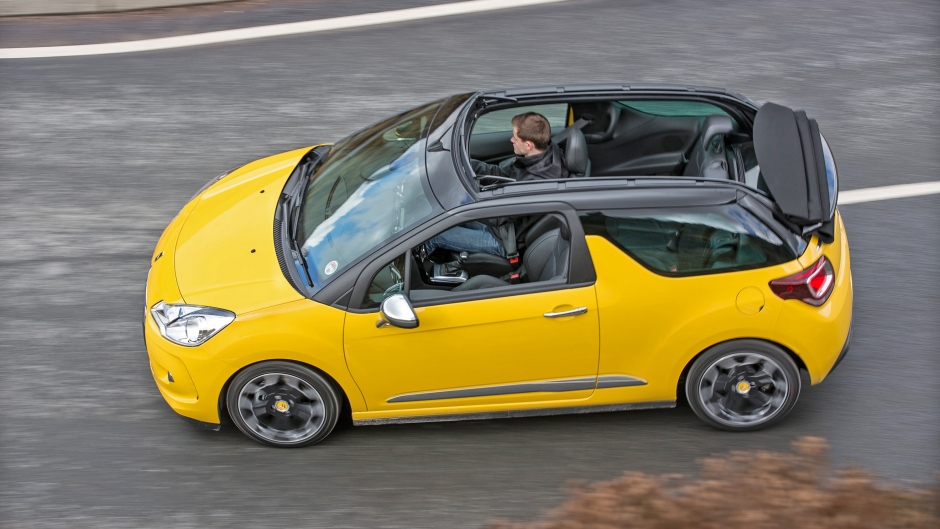
Citroen DS3 Cabrio prices Limited stock DS 3 Cabrio prices Limited stock
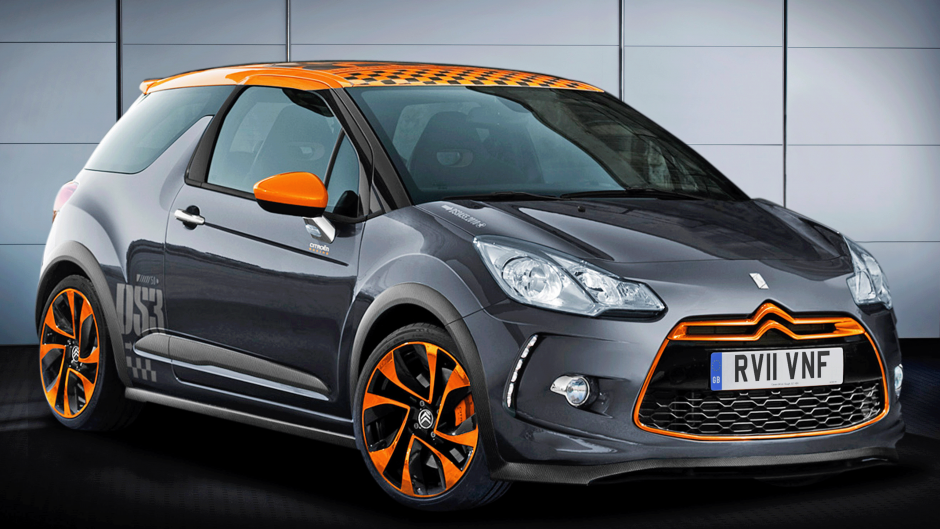
Citroen DS3 Racing prices Limited stock DS 3 Performance prices Limited stock
Citroen DS3
The Citroen DS3 was available from 2010 to 2016 and it is the Citroen version of the car, so it has the chevron badge on the front and a more subtle look. All versions are now getting on a bit, as it’s an older car now, but since the later DS 3 is really similar mechanically, the Citroen model is great value for money.
The car was available with 1.4- and 1.6-litre petrol engines and a 1.6-litre diesel, which came with various power outputs. The petrol 1.6 had either 120hp or 150hp, while the diesel was available in 90hp and 110hp forms.
DS 3
In 2016 the DS brand was launched and the DS 3 was its first model. It was mechanically extremely similar to the Citroen DS3, but the new DS badge on the front and different styling set it apart.
The 1.6-litre diesel engines were upgraded to 100hp and 120hp respectively, so it was a bit more powerful there, and a new 1.2-litre petrol was also added to the range, which was aimed at young drivers and had just 82hp so was cheaper to insure. The more powerful 1.6-litre petrol was upgraded to have 165hp, too.
Later DS 3 models had the option of more powerful 110hp and 130hp 1.2-litre turbocharged petrols, which are great engine choices, as they're both punchy but efficient.
Citroen DS3 Cabrio/DS 3 Cabrio
The Citroen DS3 Cabrio and DS 3 Cabrio models aren’t true convertibles - it’s more like a really big fabric sunroof than a truly removable top. This is good and bad, as it means the car is cheaper to buy and run than a full-convertible but you don’t quite get the full experience of roof-down motoring.
The Cabrio versions are okay if you really want to get the roof down on sunny days but if you are not fussed, choose a hard-top model as it will be cheaper to buy and run, more refined and there’s less to go wrong.
Citroen DS3 Racing/DS 3 Performance
There were two high-performance hot hatch versions of the car: the Citroen DS3 Racing, which had 207hp, and the DS 3 Performance, which had 210hp. Both are fast and fun to drive, but we’d recommend against them for most people.
This is because they are rare, more expensive to run than other versions and much more uncomfortable. Equivalent age Ford Fiesta ST and Mini Cooper S models are much more fun and more comfortable while also being cheaper to buy and run.
Which Citroen DS3/DS 3 to buy: trim levels
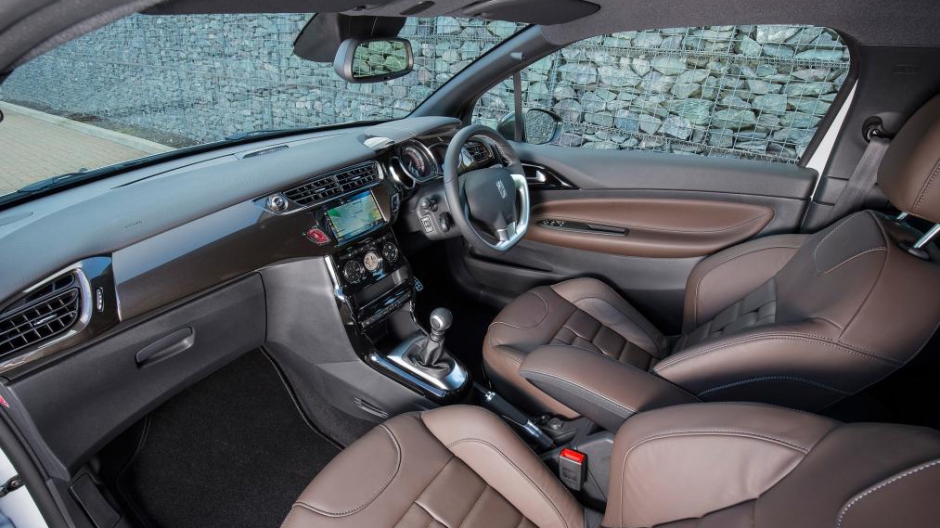
There have been so many trim levels and special editions for the Citroen DS3 and DS 3 over the years that we can’t list them all here, but here are the ones you will see most often.
| Trim | Equipment | Deals |
| DSign | Limited stock: This is the entry-level model for the original Citroen DS3, and comes with electric windows, cruise control and electric door mirrors. | |
| DStyle | Limited stock: This mid-spec model added air-conditioning, tinted windows and alloy wheels to the specification list over the DSign version. | |
| DSport | Limited stock: This version came with climate control, 17-inch alloy wheels, Bluetooth, emergency call function and sports seats. | |
| DSport Plus | Limited stock: The DSport Plus came as part of a range update and added things like LED lights, emergency braking and tyre pressure monitoring. | |
| Chic | Limited stock: This was the entry-level model when the car became the DS 3. It gets a seven-inch media screen with digital radio and Bluetooth, 16-inch alloy wheels, air-conditioning and cruise control. | |
| Elegance | Limited stock: On top of the kit you get with the Chic trim, Elegance adds climate control, privacy glass, rear parking sensors and sports seats. | |
| Prestige | Limited stock: This high-spec model features 17-inch alloys, xenon headlights, autonomous emergency braking, auto lights and wipers, and front parking sensors. | |
| Ultra Prestige | Limited stock: This top-spec model gets ‘watch-strap’ leather seats and upholstery and an eight-speaker stereo system. |
Best Citroen DS3/DS 3 engine
The best version really depends on your personal circumstances, as the 1.6-litre diesel engines are really efficient on the motorway. But since most drivers of superminis spend more time driving on local roads and around town, we would generally recommend the petrol versions instead.
The 1.2-litre ‘PureTech’ models that arrived later in the car’s lifetime are best, as they are great to drive, efficient and punchy. The non-turbocharged version of the 1.2-litre engine with 82hp is good for cheaper insurance for young drivers, too. It will also be really cheap to run.
Best Citroen DS3/DS 3 model for…
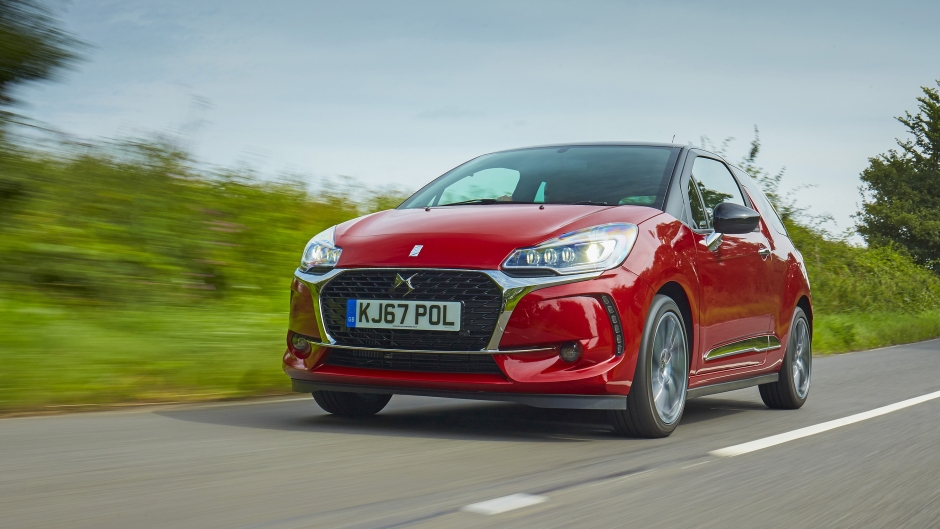
The version that’s best for you will depend on where you usually drive. If you have a long commute and it’s mostly motorway, then the diesel versions are a great option. The petrol models are better for local trips, though, and while the manual versions are cheaper to buy and run, you might want to choose an automatic if you spend a lot of time in heavy traffic. Here, we’ve picked out some examples for various types of driver.
| Citroen DS3 VTi 82 DStyle: If you’re a young driver and need a model that’s cheap to buy and run, the 82hp version is ideal. It’s not very fast, but the low insurance costs and good fuel economy will keep costs down. | ||
| DS 3 PureTech 130 Prestige: No version is an ideal family car, as it’s a three-door only and isn’t very big inside, but if you want a newer model that can occasionally carry extra passengers, the later DS 3 feels more modern and upmarket. You’ll pay more, of course, but the DS 3 in PureTech 130 form is a great choice overall. | ||
| DS 3 Performance: The DS 3 Performance has 210hp and goes from 0-62mph in just 6.5 seconds. There’s also the Citroen DS3 Racing, which has 207hp and is just as fast. Both are quite rare to find, though, and the stiff suspension is uncomfortable. | ||
| Citroen DS3 HDi 90 DStyle: We’d avoid the lower-powered diesel model. If you really need a diesel supermini then go for the more powerful 110hp version instead as it’s more relaxing to drive and is just as economical. |
Citroen DS3/DS 3 rivals
The Citroen DS3 and DS 3 have two really obvious rivals: the Fiat 500 and Mini Hatchback. These are two of the most popular small cars around thanks to their stylish looks and fun driving experience. The Citroen and DS models were built to cash in on the success of these models, and they were pretty successful - lots were sold and we reckon it’s just as good to drive as the Fiat 500.
The Mini is more fun, though, and the Ford Fiesta is also more enjoyable to drive. There are more practical superminis around too, including the Volkswagen Polo and Skoda Fabia, but these aren’t as chic as the DS 3.
Citroen DS3/DS 3 practicality: dimensions and boot space
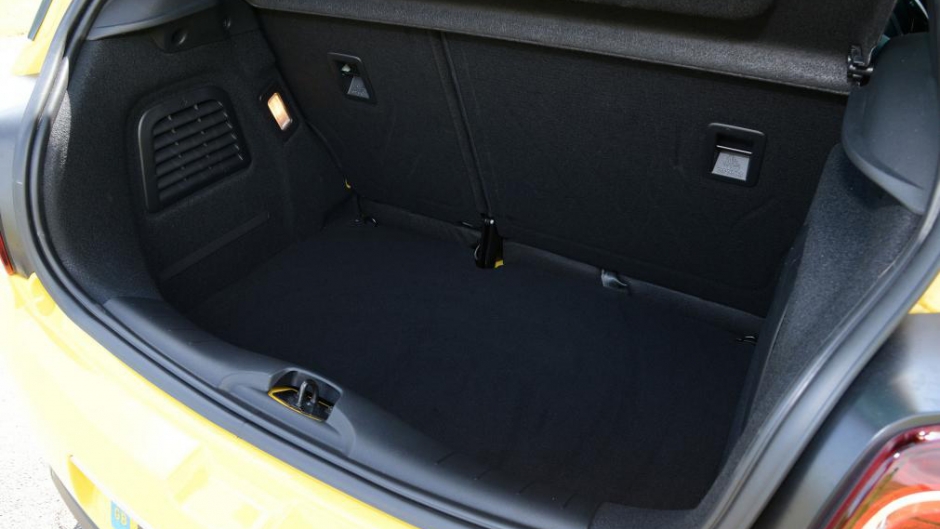
Citroen DS3/DS 3 dimensions
The Citroen DS3 and DS 3 may have different brands, but they’re really the same car. This means they share dimensions - both versions are 3,948mm long and 1,715mm wide. It’s on the small side for a supermini, at around 20mm shorter than a Ford Fiesta, but the Fiat 500 is even smaller, as it's more of a city car.
There are three doors only - covering the two passenger doors and the hatchback boot opening - so access to the back seats isn’t easy. There’s not a whole lot of space back there either, so the rear seats are really only useful for short trips or occasional use.
CLICK TO READ OUR FULL STORY ON CITROEN DS3/DS 3 DIMENSIONS
| Length 3,948mm | Width 1,715mm |
| Height 1,483mm | Weight 1,120kg - 1,275kg |
Citroen DS3/DS 3 boot space
Both the Citroen and DS versions of the car have a 285-litre boot that expands to 980 litres if you fold down the rear seats. This is pretty good next to the Mini and Fiat 500, which have tiny luggage spaces, but there are plenty of superminis, such as the Skoda Fabia, that have a lot more space in the back.
CLICK TO READ OUR FULL STORY ON CITROEN DS3/DS 3 BOOT SPACE
| Seats up 245-285 litres | Seats down Up to 980 litres |
Citroen DS3/DS 3 reliability
The Citroen DS3 and DS 3 are generally regarded as reliable small cars, but the Citroen models in particular are getting older now and you should take care when buying to choose one that has been well looked after. The earlier ‘THP’ petrol engines have some common faults with the water pump and turbocharger, but as these models don’t have a cambelt to change you will avoid a hefty bill there - a large proportion of other engines need to have this changed every 10 years.
The Citroen DS3 came in 17th place in the 2017 Driver Power customer satisfaction survey, which was an okay finish but nothing special. Unfortunately, Citroen came in 28th place out of 29 car makers in the 2021 poll.
Citroen DS3/DS 3 warranty
The Citroen DS3 and DS 3 had a normal three-year, 60,000-mile warranty from the factory, which means that you won’t find any with any significant amount of this left over on the used market. If you want a warranty on one then you will need to pay extra for an aftermarket one.
| 3 years | 60,000 miles |
CLICK HERE FOR MORE INFORMATION ON USED CAR WARRANTIES
Used Citroen DS3/DS 3: should I buy one?
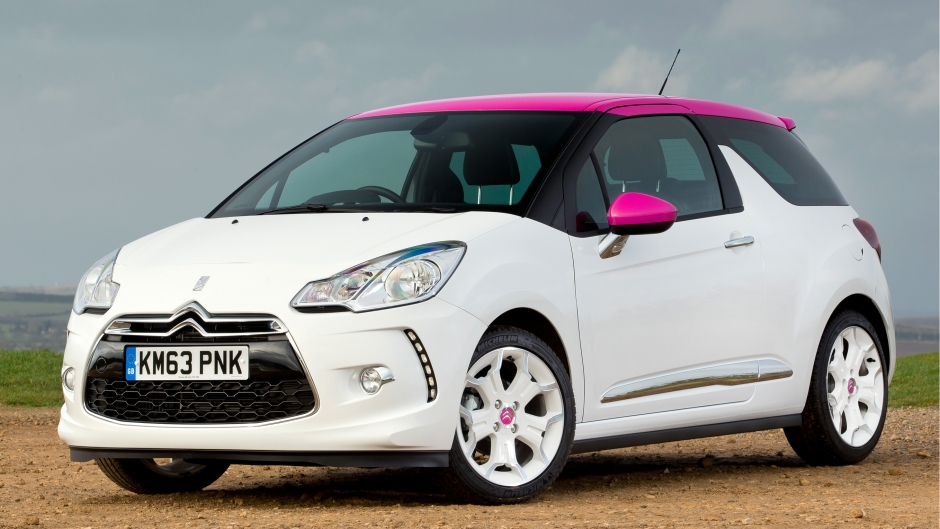
The Citroen DS3 and DS 3 can be considered as the same car if you’re not bothered about how old it is, since they share so many parts and are identical in size and shape. The earlier Citroen version is better value, while the newer DS 3 has more modern kit, so decide which you prefer and then search online for one that suits you.
Either one is a great choice as a style-centric small car - they are good to drive, comfortable, should be cheap to run and match rivals such as the Fiat 500 for style. The only thorn in the DS 3’s side is the fact that there are more practical superminis, such as the Ford Fiesta and Volkswagen Polo, available for a similar amount of money - so if you’re a pragmatic buyer then you’ll prefer one of those.
Best Citroen DS3/DS 3 deals
Choose an 82hp entry-level model with the small 1.2-litre petrol engine if you’re a first-time driver or young buyer. This version has low insurance costs and will be really cheap to run, but still drives nicely and is just as stylish as any other version of the Citroen DS3.
The newer DS 3 model comes with more modern kit such as LED lights, autonomous emergency braking and a better media system. The best addition was the 1.2-litre PureTech petrol engine, though, which is a great all-round choice.
The DS 3 Cabrio isn’t a true convertible as it still has full sides - the roof just slides back like a big sunroof. It’s fun to drive on sunny days, but you will pay a little more for this model and it costs more to run as well.
*Representative PCP finance - 2018 Ford Fiesta 1.0 ST-Line Hatchback:
| PCP representative example | APR rates available | |||||
| Cash price £12,000 | APR 7.90% | Value of loan | From | |||
| Fixed monthly payment £218.12 | Annual mileage of 8,000pa | £25,000+ | 6.9% | |||
| Total cost of credit £2,755.55 | Term 48 months | £12,000-£24,999 | 7.9% | |||
| Optional final payment £4,285.79 | Loan value £12,000 | £8,000-£11,999 | 8.9% | |||
| Total amount payable £14,755.55 | Deposit £0 | <8,000 | 9.9% |
BuyaCar is a credit broker, not a lender. Our rates start from 6.9% APR. The rate you are offered will depend on your individual circumstances.
Other Editions
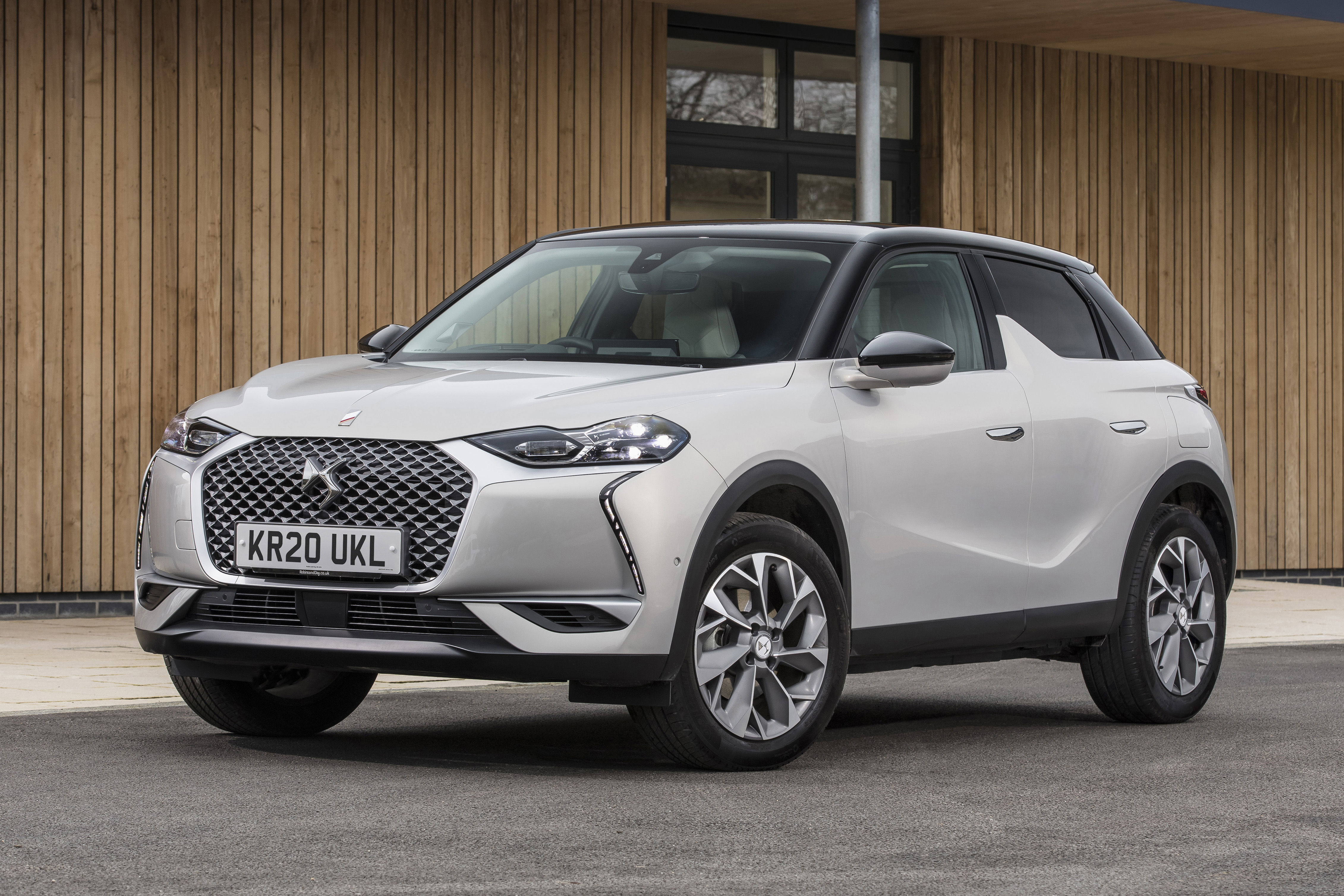
DS 3 (2019)
The DS 3 Crossback stands out with a distinctive design, but isn't a totally convincing premium car

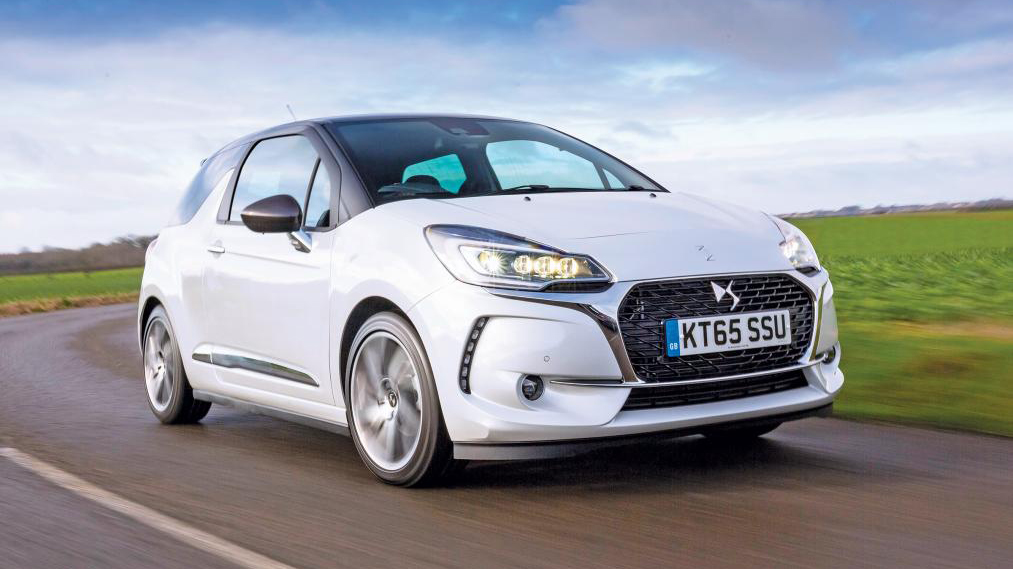
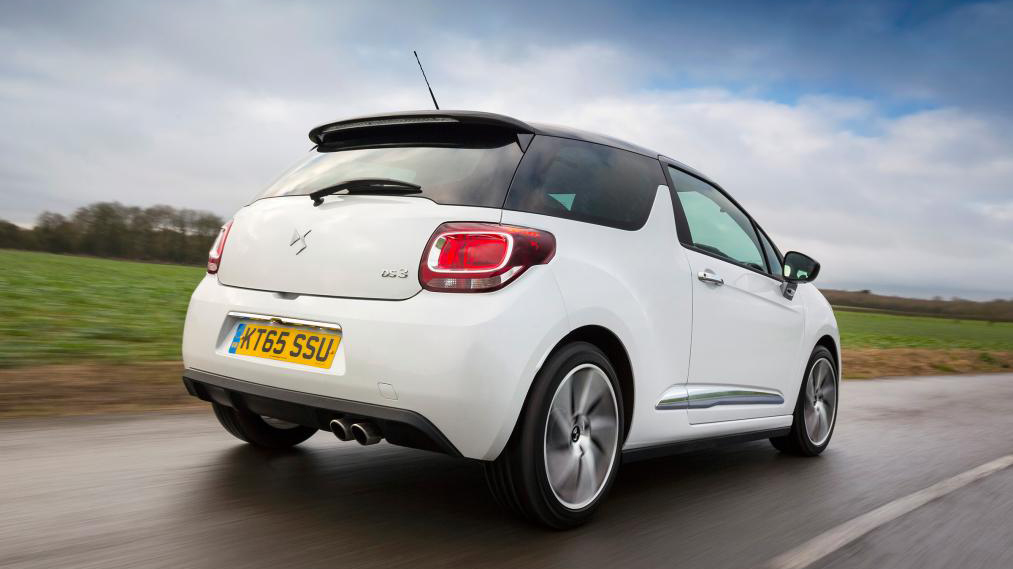
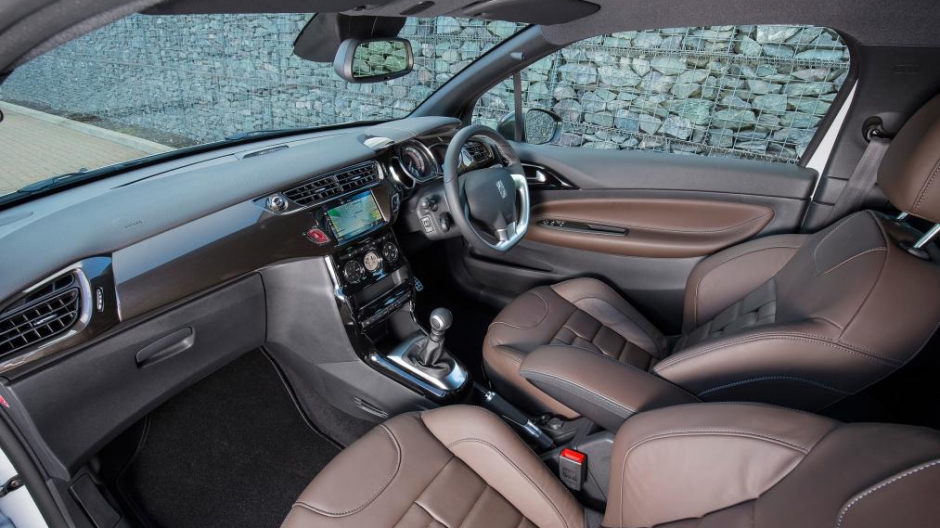
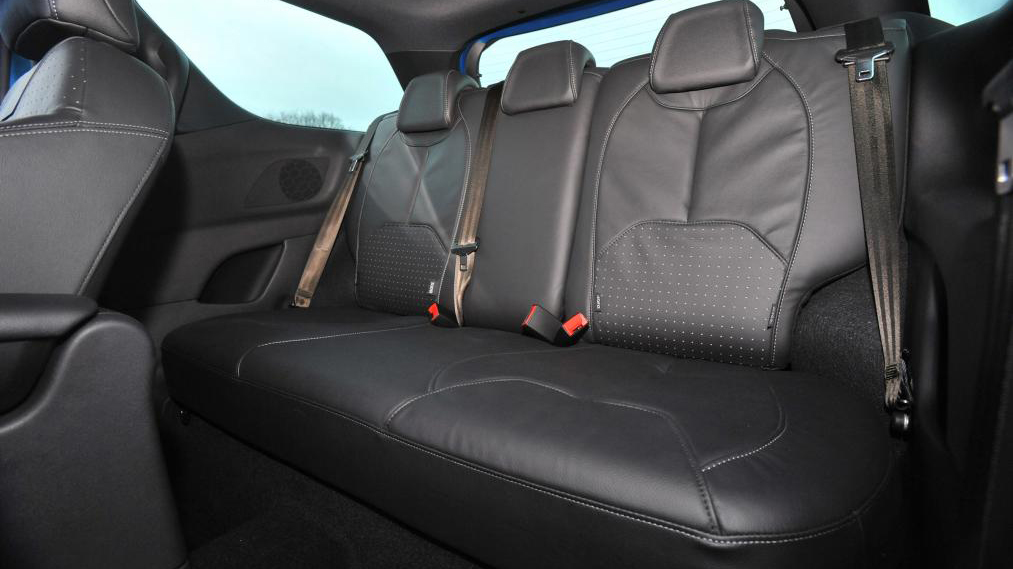
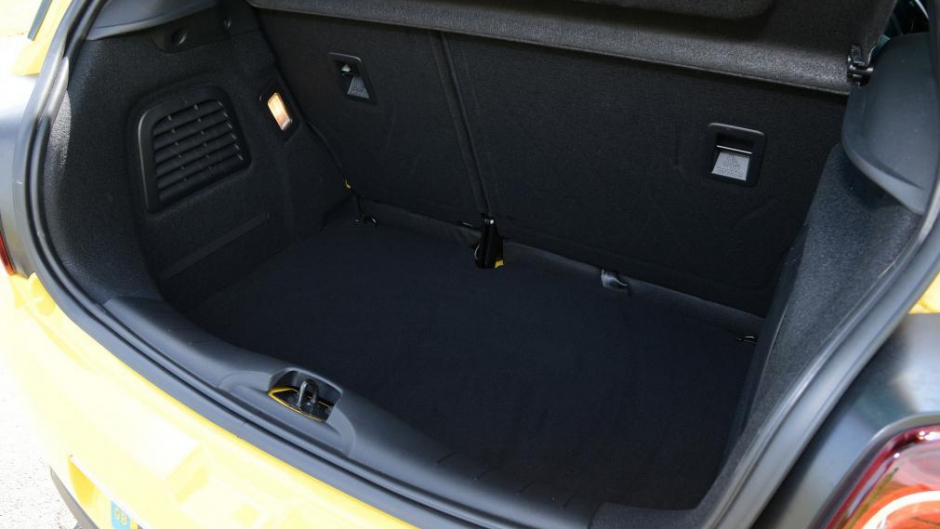
.jpg?width=759&height=427&format=webp)
.jpg?width=759&height=427&format=webp)
